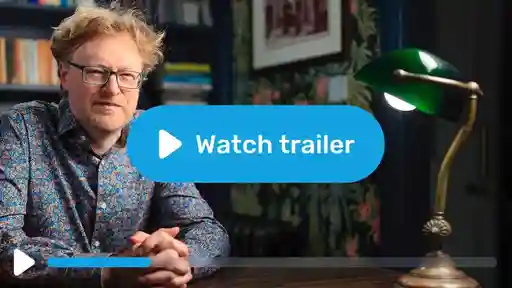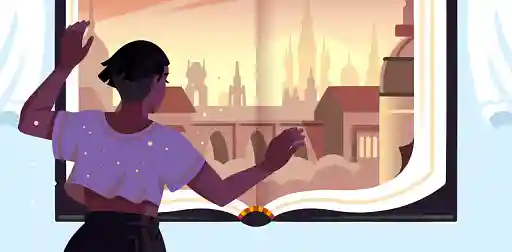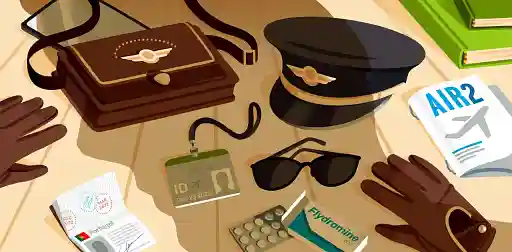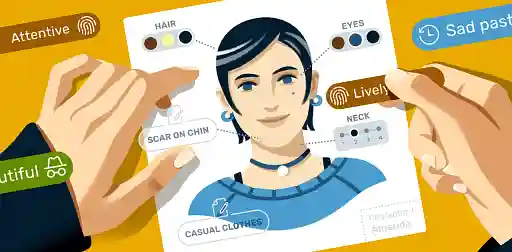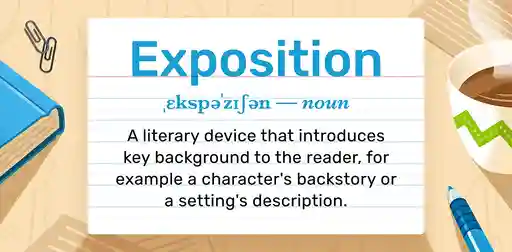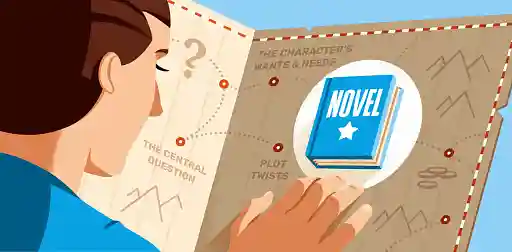Last updated on Mar 08, 2024
How to End a Story: The 6 Ways All Stories End
About the author
Reedsy's editorial team is a diverse group of industry experts devoted to helping authors write and publish beautiful books.
More about the Reedsy Editorial Team →Martin Cavannagh
Head of Content at Reedsy, Martin has spent over eight years helping writers turn their ambitions into reality. As a voice in the indie publishing space, he has written for a number of outlets and spoken at conferences, including the 2024 Writers Summit at the London Book Fair.
View profile →When we first start to read books, we quickly understand that books have two types of ending: happy and sad. But as we develop our literary palate and read deeper, it soon becomes apparent that endings are somewhat more nuanced than that.
In the first part of this post, we will dive into the many types of endings that novelists have at their disposal — and reveal the impact they can have on the reader. In the second part, we'll give you some tried-and-true tips for writing an impactful ending for your own book.
The 6 types of story endings (with examples)
Let's dive into the most common types of story endings that you'll see over and over again in storytelling. Note that, as we provide some examples from novel endings, there will be... spoilers!
1. Resolved Ending
Wrap it up and put a bow on it. A resolved ending answers all the questions and ties up any loose plot threads. There is nothing more to tell because the characters’ fates are clearly presented to the reader.
Example: Gabriel García Márquez’s One Hundred Years of Solitude provides a great example of a resolved ending. In his Nobel Prize-winning book, García Márquez intertwines the tale of the Buendia family and the small town where they live, from its creation until its destruction.
Before reaching the final line, however, he had already understood that he would never leave that room, for it was foreseen that the city of mirrors (or mirages) would be wiped out by the wind and exiled from the memory of men at the precise moment when Aureliano Babilonia would finish deciphering the parchments, and that everything written on them was unrepeatable since time immemorial and forever more, because races condemned to one hundred years of solitude did not have a second opportunity on earth.
With this ending, García Márquez effectively ends all hope of a sequel by destroying the entire town and killing off all the characters. Unlike a Deus Ex Machina ending, where everything is suddenly and abruptly resolved, this is an ending that fits with the central ideas and plot of this book. Though not exactly expected, it brings an appropriate closure to the Buendia family and the town of Macondo.
Why might you use a resolved ending? This sort of conclusion is common to standalone books — especially romance novels, which thrive on ‘happily ever afters’ — or the final installment in a series.
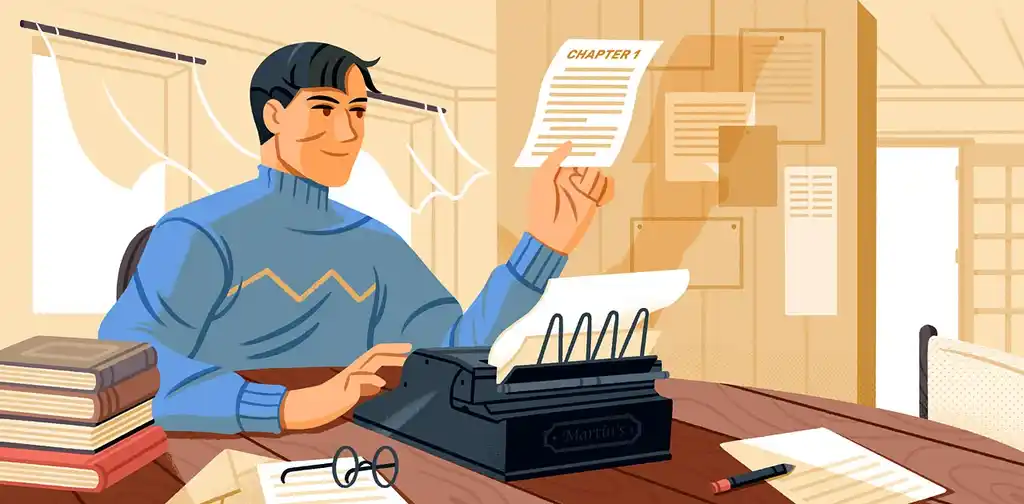
FREE COURSE
How to Write a Novel
Author and ghostwriter Tom Bromley will guide you from page 1 to the finish line.
2. Unresolved Ending
This type of ending asks more questions than answers and, ideally, leaves the reader wanting to know how the story will continue. It lets them reflect on what the hero has been through and pushes them to imagine what is still to happen. There will be some resolution, but it will, most likely, pose questions at the end and leave some doors open.
Example: Harry Potter and the Half-Blood Prince does exactly that. After years of confronting Voldemort, Harry finally knows the secret to bring him down once and for all. However, the road will only become more dangerous and will require more sacrifices than anybody thought.
His hand closed automatically around the fake Horcrux, but in spite of everything, in spite of the dark and twisting path he saw stretching ahead for himself, in spite of the final meeting with Voldemort he knew must come, whether in a month, in a year, or in ten, he felt his heart lift at the thought that there was still one last golden day of peace left to enjoy with Ron and Hermione.
Like Harry, readers know that a final meeting between him and Voldemort is coming and that everything will change for him and his friends. As a stand-alone book, this ending would probably be unsatisfactory. But as the penultimate book in the series, it leaves the readers wanting more.

Why might you use an unresolved ending? Because it can create anticipation and excitement for what comes next, you may want to use an unresolved ending if you are writing several books in a series. Who doesn’t love (and hate) a good cliffhanger?
3. Ambiguous Ending
An ambiguous ending leaves the reader wondering about the “what ifs.” Instead of directly stating what happens to the characters after the book ends, it allows the reader to speculate about what might come next — without establishing a right or wrong answer. Things don't feel quite unresolved, more just open to interpretation.
Example: The first installment of The Giver series, by Lois Lowry, uses this ending. The Giver focuses on Jonas, a teenager living in a colorless yet seemingly ideal society, and on the way he uses his newly assigned position as the Receiver of Memories to unravel the truth about his community and forge a new path for himself.
Downward, downward, faster, faster. Suddenly he was aware with certainty and joy that below, ahead, they were waiting for him; and that they were waiting, too, for the baby. For the first time, he heard something that he knew to be music. He heard people singing.
Behind him, across vast distances of space and time, from the place he had left, he thought he heard music too. But perhaps it was only an echo.
Readers will wonder what happens to Jonas once he finishes his journey and what happens to the town and people he left behind. There are three more companion books, but the story centering on Jonas is finished. Readers will see him again, but only as a side character, and will neither find out how he rebuilt his life nor how his old community fared. There might be speculation, but an answer is never clearly given: that is left to the imagination.
When might you use an ambiguous ending? If you want your readers to reflect on the meaning of your book, then this is the ending for you. While a resolved ending may satisfy readers, it probably won’t give them much pause at all. However, by trying to unpick an ambiguous ending, they get closer to what you, as the author, are trying to say.
4. Unexpected Ending
If you have led your readers to believe that your book will end one way, but at the last possible moment, you add a unexpected twist that they didn’t see coming, you’ve got yourself an unexpected ending! For an author, this type of ending can be a thrill to write, but it must be handled with care. Handled poorly, it will frustrate and infuriate your reader.
An unexpected ending must be done so that, while surprising, still makes sense and brings a satisfactory conclusion.
Example: A popular novel that makes use of this ending is And Then There Were None by Agatha Christie, where she tells the tale of ten murders without an obvious culprit that took place in an isolated island mansion. [Spoilers coming!] The last lines of the novel read:
When the sea goes down, there will come from the mainland boats and men.
And they will find ten dead bodies and an unsolved problem on Soldier Island.
Signed:
Lawrence Wargrave
The ways in which the murders occur let the reader suspect the guilt of just about every character — and then, in an epic twist, they all die, leaving the murders unexplained. It is not until the message in the bottle arrives that the true culprit is revealed, as one of the victims no less! The ending is satisfactory to the reader because it brings the plot to a close in a way that, though surprising, invites them to think back on how the murderer set things up for the remaining deaths, and ultimately makes sense.
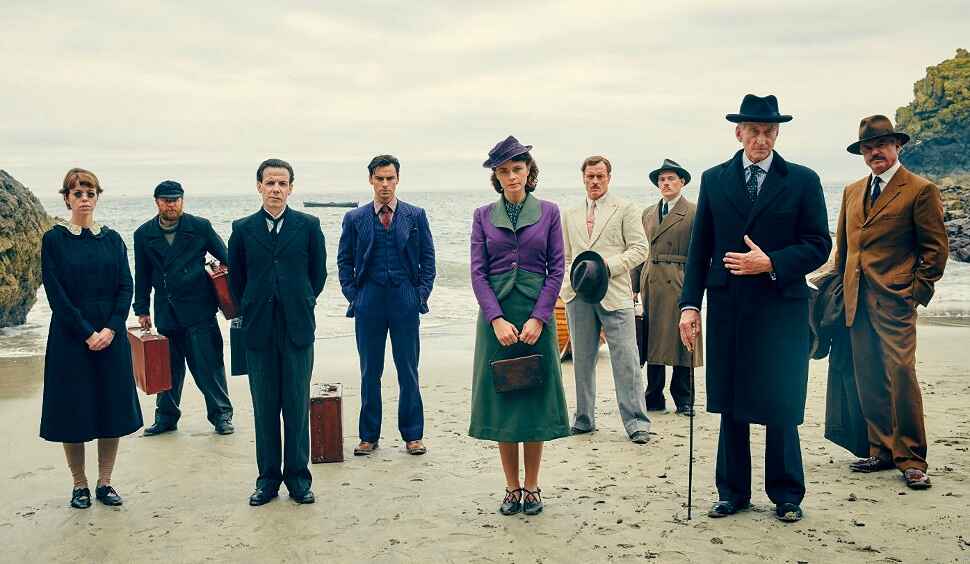
Why might you use an unexpected ending? These ‘twist endings’ are the bread and butter of mystery novels. Just be aware that while fans of the genre will expect a twist — they won't want one that comes entirely out of nowhere. To execute a flawless unexpected ending, you must lay groundwork throughout your book so that the reader can reflect on the plot and go, “ah, but of course!”
5. Tied Ending
Much of storytelling is cyclical. Sometimes it’s a metaphorical return home, such as in the classic story structure of The Hero’s Journey. In other cases, the cycle is quite literal — the story ends where it began.
Example: Erin Morgenstern uses this ending in her book The Night Circus, where she tells of a duel between two magicians that takes place within Le Cirque des Rêves, a traveling circus and, arguably, a character on its own.
Widget takes a sip of his wine and puts his glass down on the table. He sits back in his chair and steadily return the stare at him. Taking his time as though he has all of it in the world, in the universe, from the days when tales meant more than they do now, but perhaps less than they will someday, he draws a breath that releases the tangled knot of words in his heart, and they fall from his lips effortlessly.
‘The circus arrives without warning.’
With what may be the most famous lines of the book, “The circus arrives without warning,” this novel closes the characters’ storylines the same way the book begins. In both cases, the words are used to start telling a story; in the beginning, it serves as an introduction to the book, the words filled with wonder and expectation. In the end, it serves as a resolution, the words filled with hope for those who remain. Additionally, Morgenstern later uses a few more pages to finish the second-person narrative of the reader’s own visit to the circus, effectively ending the novel with the same POV that it began.
Why might you use a tied ending? More common in literary fiction, a tied ending can help give you a sense of direction when writing your book — after all, you are ending the same way you began. But don’t think that this makes writing your ending easier. On the contrary, it is up to you to give greater depth to those repeated actions and events so that, by the end, they have a completely different feel.
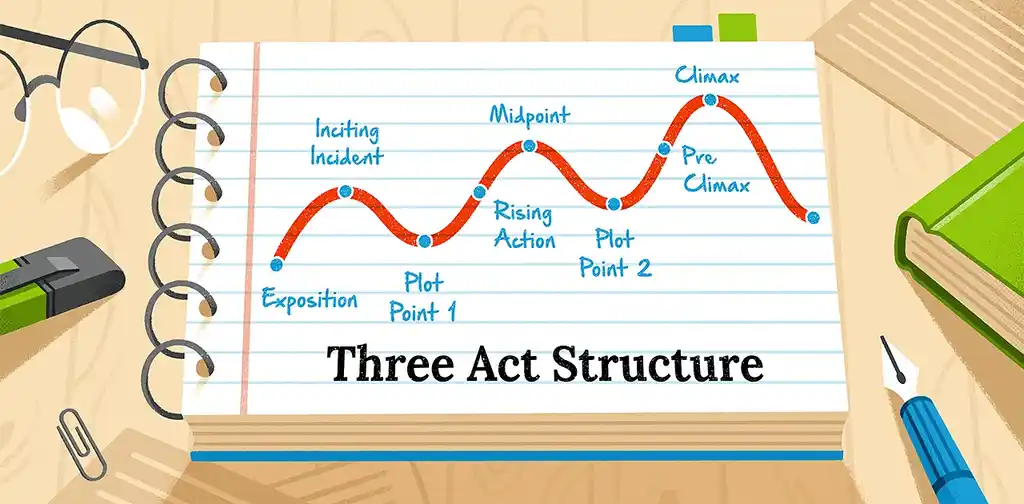
FREE COURSE
How to Plot a Novel in Three Acts
In 10 days, learn how to plot a novel that keeps readers hooked
6. Expanded Ending
Also known as an epilogue (find out more here), this type of ending describes what happens to the world of the story afterward in a way that hints at the characters' fates at some point in the future.
Example: In Markus Zusak’s The Book Thief, Death himself narrates the story of a young girl living in Nazi Germany. In his four-part epilogue, Zusak gives the reader an insight into what happened to Liesel after the bombing, her adult life, and even her death.
All I was able to do was turn to Liesel Meminger and tell her the only truth I truly know. I said to the book thief and I say it now to you.
*** A LAST NOTE FROM YOUR NARRATOR***
I am hunted by humans.
Instead of going into great detail, Zusak uses short chapters that feel more like sneak peeks into her life. Additionally, it serves the purpose of joining Liesel, the main character, with the narrator, Death, and allowing them to converse on more equal terms.
Why might you use an expanded ending? If you need to tie up loose ends but could not do it within the actual story, then this is the ending for you. However, it should not replace a traditional ending or be used to compensate for a weak ending. Instead, it should give further insight into the characters and give a resolution to the readers.
Now that you understand what kind of endings there are, let’s start thinking about how to create them for yourself.
How to end a story in 7 steps
To help you create a story ending that is unexpected and satisfying, we've turned to the professional editors on Reedsy and asked for their top tips on wrapping up your book.
How to end a story:
- Find your ending in the beginning
- Completion goes hand-in-hand with hope
- Keep things fresh
- Make sure it’s really finished
- Last impressions matter
- Come full circle
- Leave some things unsaid
1. Find your ending in the beginning
While your story may contain several different threads and subplots, all books are going to have a central question that’s raised by the opener. Who killed the boss? Will our star-crossed lovers end up together? Can a rag-tag group of heroes really save the world? Is there meaning to a middle-class existence? Can this family’s relationship be saved?
Your central question is the driving force of what will happen in the plot, so make sure you settle it by the time the book ends. Even if your hero's story continues in a sequel, you’ll want each book to have a central question and a resolution for them to feel complete.
2. Completion goes hand-in-hand with hope
Literary agent Estelle Laure explains that a great ending is one that gives the reader both a feeling of completion and hope.
“You have to assume the character has gone through hell, so let them see something beautiful about the world that allows them to take a breath and step into the next adventure. Even your ending should leave your reader dying for more. They should close the book with a sigh, and that’s the best way I know how to get there. This is, after all, a cruel but wondrous life.”
Hire an editor and give your book a powerful ending
Rebecca A.
Available to hire
I am a copyeditor, proofreader, and production editor with over ten years of experience in book publishing and project management.
Sean L.
Available to hire
Proofreader/editor for 11+ years, reader for 40+, and as a lifelong fan, horror is my go-to genre.
Dick H.
Available to hire
Experienced London-based editor of fiction (novels, short stories, plays), biography, art and culture and personal statements.
3. Keep things fresh
This is good advice for every stage of writing, but perhaps nowhere is it more important than the ending. While there are certain genres where a type of ending is expected (romances should end with a happily ever after, mysteries with identifying the killer), you don’t want people to be able to see everything coming from miles off. So even if the payoff from the big resolution is expected, as the writer, you’ll want to think hard to find ways to keep things fresh and interesting. To achieve this, try to dig deeper than your first impulse because chances are, that’s also going to be your audience’s first impulse as well. You don’t necessarily need to subvert that expectation, but it will give you some hints as to what most people think will happen.
4. Make sure it’s really finished
To create a satisfying ending, close your book with purpose.
As Publishing Director of Endeavor Media, Jasmin Kirkbride’s biggest tip is to make sure you follow the rule of Chekhov’s Gun.
“Every subplot and all the different strands of your main plot should reach satisfying, clear conclusions. If they are meant to be left ambiguously, ensure your reader knows this, and create something out of that uncertainty.”
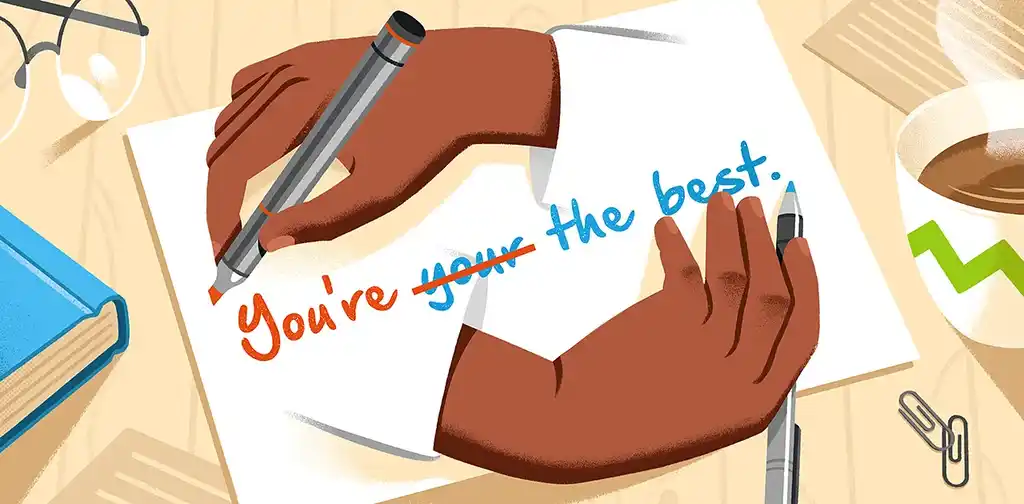
FREE RESOURCE
Get our Book Editing Checklist
Resolve every error, from plot holes to misplaced punctuation.
5. Last impressions matter
In some ways, the final line of a story is even more important than the first one. It’s the last impression you’ll make in your reader’s mind, and the final takeaway of the whole book. Hone in on what kind of emotions you’d like your reader to feel as they close the book, and ask yourself what kind of image or concluding thought would best convey that. Not sure what that should be? Try looking at your book’s theme! Often the final image is the summation of everything your theme has been building.
6. Come full circle
Editor Jenn Bailey says that a good ending brings the book’s internal and external story arcs to a rational conclusion.
“You need to come full circle. You need to end where you began. You need to take the truth your main character believed in at the beginning of the story and expose it as the lie that it is by the end. In your ending, the main character doesn’t have to get what they want, but they do have to get what they need.”
For more about character arcs, check out this post!
7. Leave some things unsaid
There’s a balance to endings — too little resolution and your book will feel rushed and unsatisfying, but too much and the resolution (dénouement) starts to drag. In general, though, you want to keep things brief, especially if you want room for an epilogue. It’s okay to trust your readers to reach some conclusions on their own, rather than spending whole chapters making sure every question you raised is answered. But, if do you really want everything tied off, consider moving the resolution of some of your subplots to just before the climax. This avoids jamming everything into the last five pages, allowing your subplots space to breathe.
As we have seen, there are many methods for ending stories! However you decide to finish your novel, there is one thing that you should always keep in mind: take account of the story that came before and give it the ending that it needs, not the one you think readers want, and it will be satisfactory for all.
